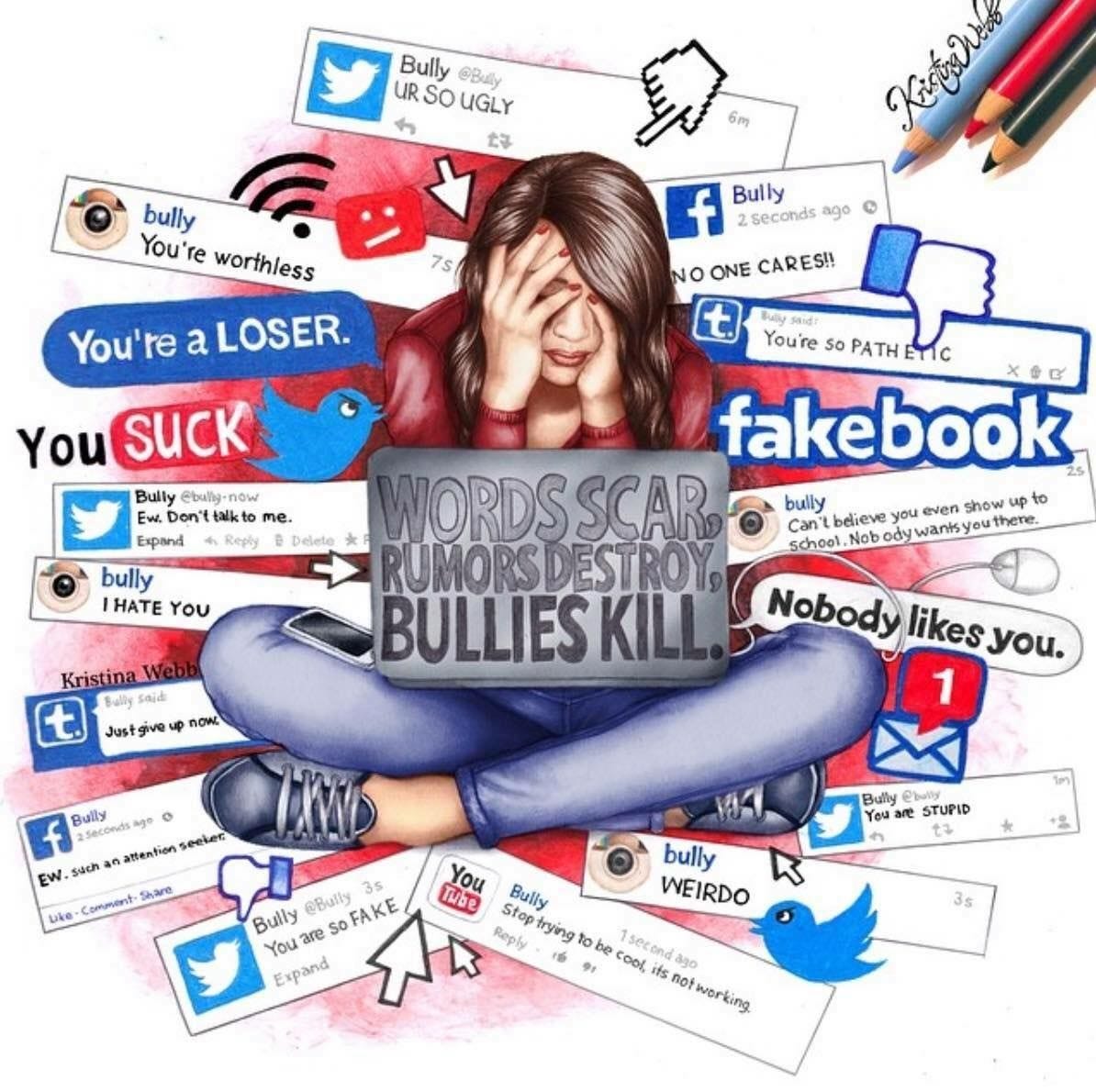
I recently came across a photo of me and a classmate from 2010 on Facebook. The comment section was filled with hateful comments from the classmate. It said, “ I can’t believe I was so stupid that I clicked a picture with her.” I felt horrible then but ten years later I have clarity on why she chose to do that in the first place. Let’s talk about this in detail.
So, what is cyberbullying?
Cyberbullying is bullying that takes place over digital devices like cell phones, computers, and tablets. It can occur through messages, apps, social media, or online gaming.

Why would someone cyberbully in the first place?
The social ladder- Bullying generally revolves around the concept of the social ladder. In order to move upwards, children tend to put others down. Social media is the best place to get attention and be seen by everyone without putting much effort into it. By uploading an embarrassing picture of a classmate or posting hate comments on their photos, it gives the bully instant gratification. Other kids who are trying to move up the social ladder, see this as a lever and join in to gain attention.
Control- Cyberbullying is used as a way to establish authority over another person. Cyberbullies know that if they have the power to damage someone’s reputation, the victim will be too afraid to speak up and will refrain from raising their voice.
Ignorance- Sometimes children cyberbully because they think it’s funny. As they don’t see the reaction of victims in person, cyberbullies don’t realize how much damage their one hurtful comment can make. The bystanders who see these comments and posts are often friends with the bully. They fear being shunned or becoming the target and refrain from saying something too.
How will you know if your child is involved in cyberbullying?
Here are some warning signs a child may display :
The child hides their screen and refuses to share their online activity.
There is a significant change in the usage of electronic devices.
A child becomes withdrawn and start to interact less.
Social media accounts are shut down or new ones start to appear.
Trouble sleeping at night or sleepy during the day.
Loss of interest in favorite hobbies or activities.
Displaying anger or sadness during/after being online or using their phone.

How can you prevent this?
You can communicate the following things to your child to prevent cyberbullying:
Think before sharing- Just like you should think before you say, think before you type. Can my words hurt someone? Am I giving someone access to personal information? Facebook and Instagram have guidelines on how children can be mindful of what they share.
Keep your password safe- Your password protects your data. Don’t share it with strangers or even friends. Change it from time to time to avoid hacking. Also, remember to log out of all public computers.

Google yourself- Googling yourself helps you understand which data is available to the world. If you see something you don’t want to share, track it down and remove/report it. Here is how you can report data on Instagram and Facebook.
Monitor their data- Have a conversation with a child from time to time to understand which sites are they are accessing. In case they mention a new online friend, research and find out more about them. Tell them that in case someone makes them feel unsafe they can block, restrict, unfriend, or even report that person.
Empathy- Talk to them about the concept of a bully, bystander, and the bullied. Let them know that every action taken and not taken does make a difference. Cyberbullying can happen to anyone. Removing themselves completely from the internet is not a long term solution, all it does is empower the bully more. Help the child take a stand in the virtual world.
In the current world, children are on their screens most of the time. It is important to talk about cyberbullying. Doing this will help, children become mindful of the words they use and the data they share online. Let’s make the virtual world a safe and empathetic place.



